In 1939, director John Ford did for the western what Francis Ford Coppola would do for the gangster movie decades later; he saved it from B-movie obscurity. Stagecoach not only revitalized the western from a commercial standpoint, but also an artistic one and its influence is still being felt seventy-nine years later. There are traces of Stagecoach that can be found in the vast majority of the westerns that followed; be it from the landscapes of Monument Valley or the music, camera work, production elements, or other tropes that we associate with the genre. Any film that has been mimicked so much, however, risks feeling obsolete or dated. This has happened to plenty of fine films and going in I wondered how Stagecoach was going to live up. Was it a relic better left to the past, or instead a cinematic classic that stands the test of time?
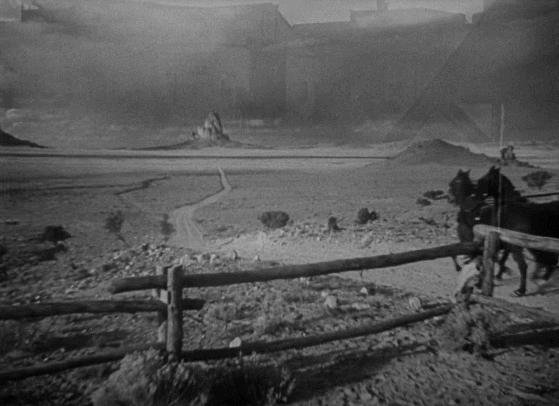
Stagecoach is an ensemble in every sense of the word and multiple characters are drawn straight from western tropes: the hooker with a heart of gold, the outlaw, the drunken doctor, the banker, the helpless lady, the gentleman with a checkered past, etc. Though their reasons are different, they end up traveling together on a stagecoach to a new town. To get there, they have to go through the treacherous Monument Valley, where they are constantly under threat from an Apache attack. This Apache threat establishes a feeling of dread that hangs over the heads of the cast throughout their journey together. Here lies one of the film’s greatest strengths: instead of focusing on individual character development, it uses basic character archetypes and develops them through events happening in the plot. The characters themselves are entertaining, with the exception of one or two that are just taking up space, but most of them get equal time to shine.
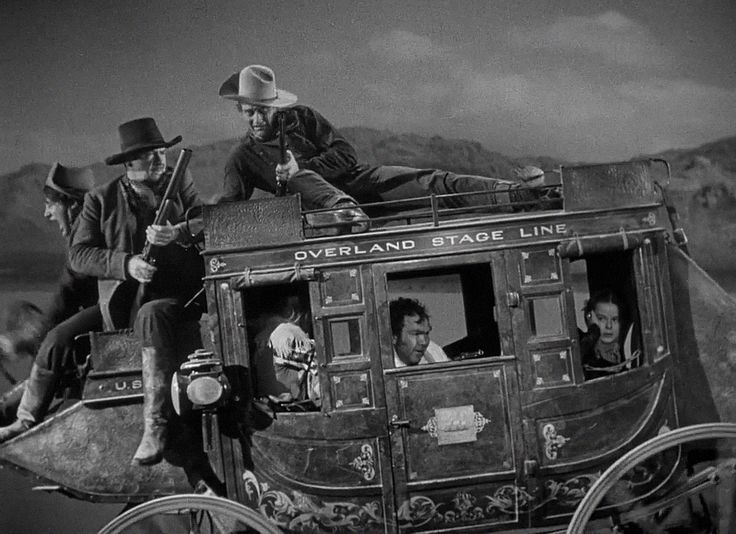
Going in, I have to admit I had a sort of preconceived notion of what to expect, despite John Ford’s reputation. My only exposure to his works was seeing The Searchers at a very young age and it didn’t make much impact at that time. With Stagecoach, I was expecting a light, fluffy, action-adventure with events that didn’t carry much weight or hold any deeper meaning. I’m happy to say that, at times, I can be an idiot. There is not really much action for a good part of the runtime, but when it hits, it is fantastic because of the way it is built up. Instead, this is about a group of people learning to support each other despite the differences they have or prejudices they hold. The more controversial characters (the outlaw and the prostitute) are shown in a brighter light than the ones who are held up higher by society, like the banker, who is crooked and selfish. This is a message that still holds up today, even though some of the film’s politics don’t stand up to scrutiny in the modern age.
Now, in retrospect, I’m fairly certain that any prejudice I may have had before viewing Stagecoach was a result of the actor whose stardom was launched as a result. I have never been a John Wayne guy. He never impressed me in the few roles I had seen him in and his actions outside of acting caused me to harbor a bit of a grudge against him. In my mind, he has always represented that part of the Hollywood “Old Guard” that rejects change and would let cinema become complacent just to stroke his own ego. Look how he labeled the magnificent High Noon as un-American and trashed it as a result. Not to mention, many films over the years (like Full Metal Jacket) have used his legend in a way to criticize and subvert what he stands for. That being said, when John Wayne’s outlaw character, The Ringo Kid, made his entrance in Stagecoach in that wonderful dolly shot coming closer as he cocks his shotgun one handed, I screamed internally like a fanboy. It is an incredible shot, and I’m certain that the character could have dropped out of the picture after this scene and Ford still would have made Wayne a star. It’s that good. The role doesn’t call for much in terms of acting range, but the Duke makes the best of it. The Ringo Kid is magnetic on screen and his romantic angle with the prostitute serves as the heart of the story.
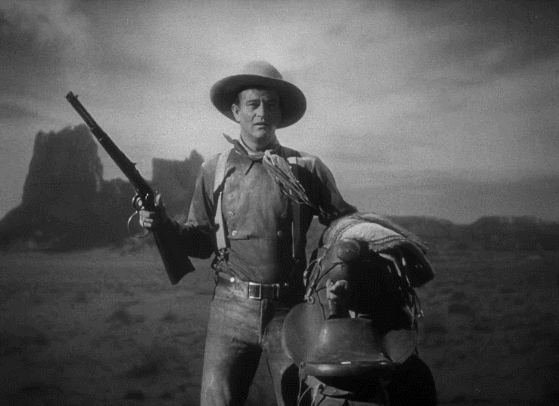
When it comes to pure filmmaking, Stagecoach is a marvel, especially for 1939. Just a couple of years later, Orson Welles dropped Citizen Kane and pushed the art of filmmaking forward. Welles’ masterpiece is lauded for its breakthroughs in composition, such as his from the floor ceiling shots, but it must be noted that Ford beat him to the punch two years earlier. Welles even declared that he watched Stagecoach thirty-nine times while making Citizen Kane and claimed it was instrumental in influencing him. It is easy to see why. Ford has a way with composition that makes it seem easy. At the risk of sounding pretentious, it is as if the cinema gods created Monument Valley knowing that one day John Ford would be using them. However, his instinct for great-looking shots isn’t necessarily limited to the Monument Valley landscape as his interiors, such as the hallway shot shown below, are equally as impressive.
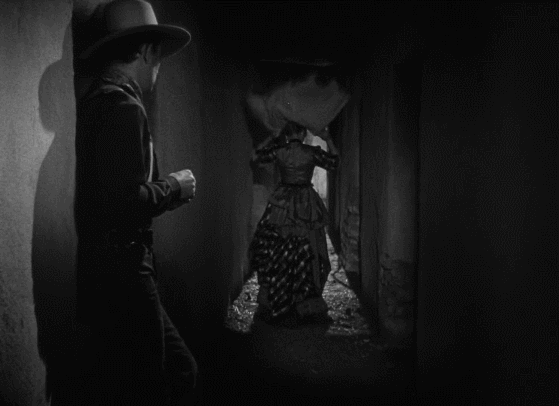
The greatest aspect of the script may not even be the banter between characters, but instead the structure. On paper, Stagecoach is basically perfect action-adventure. The characters set off with the doom and gloom of death hanging over their heads, and the deeper they go, the closer they get to it. Interestingly enough, the climax isn’t a full-on battle with the Apaches, as that happens at the end of the second act. Instead, the film scales down to put the focus on the Ringo Kid and his relationship with the prostitute while also having to avenge his family by dueling a few morally inept gunslingers. It’s the perfect comedown from the thrills of the Apache chase as the film decides to speak to the viewers emotions. However, despite the duel being captivating, this last third of the film just is not as compelling. Many of the characters just simply disappear because they have nothing more to do and what is there is slightly anti-climactic. It is as if the ride ends a bit too soon and the ending doesn’t pack the punch it needs to.
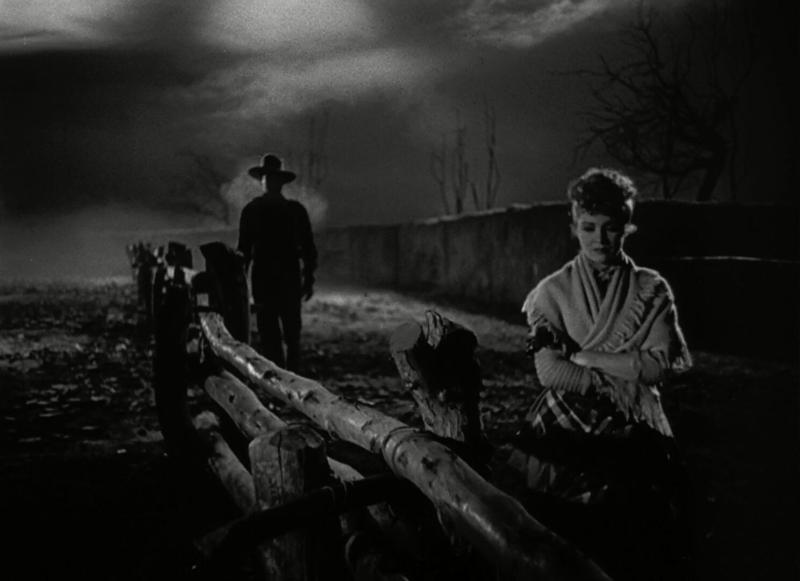
Going back to the politics, I would be remiss if I did not mention the portrayal of minorities in this picture. They are either depicted as comedic relief, remorseless villains, or untrustworthy. Despite the forward-thinking depiction of the outlaw and prostitute, there is still an ugly side to this film with its depiction of Native Americans. However, Ford should be praised for ensuring that the Native American actors used for the Apache attack scenes were properly paid for their contributions.
Some aspects of Stagecoach have not aged so well, but as a whole I was pleasantly surprised by how it holds up. It is thrilling, funny, and whole-heartedly endearing. It set the stage for the decades to come, not only the western genre, but action-adventure films in general. Even later releases like Star Wars and Raiders of the Lost Ark owe much to John Ford’s breakthrough. Ford would go onto much greater heights with the western and would find critical and commercial acclaim with entries like The Searchers and The Man who Shot Liberty Valence. However, despite the amount of success he achieved afterward, Stagecoach still stands high as an important piece of genre film history. It contains a wonderful cast of characters and a theme of coexisting that is still relevant today. It just goes to show that despite how films age and change, some things are timeless.
